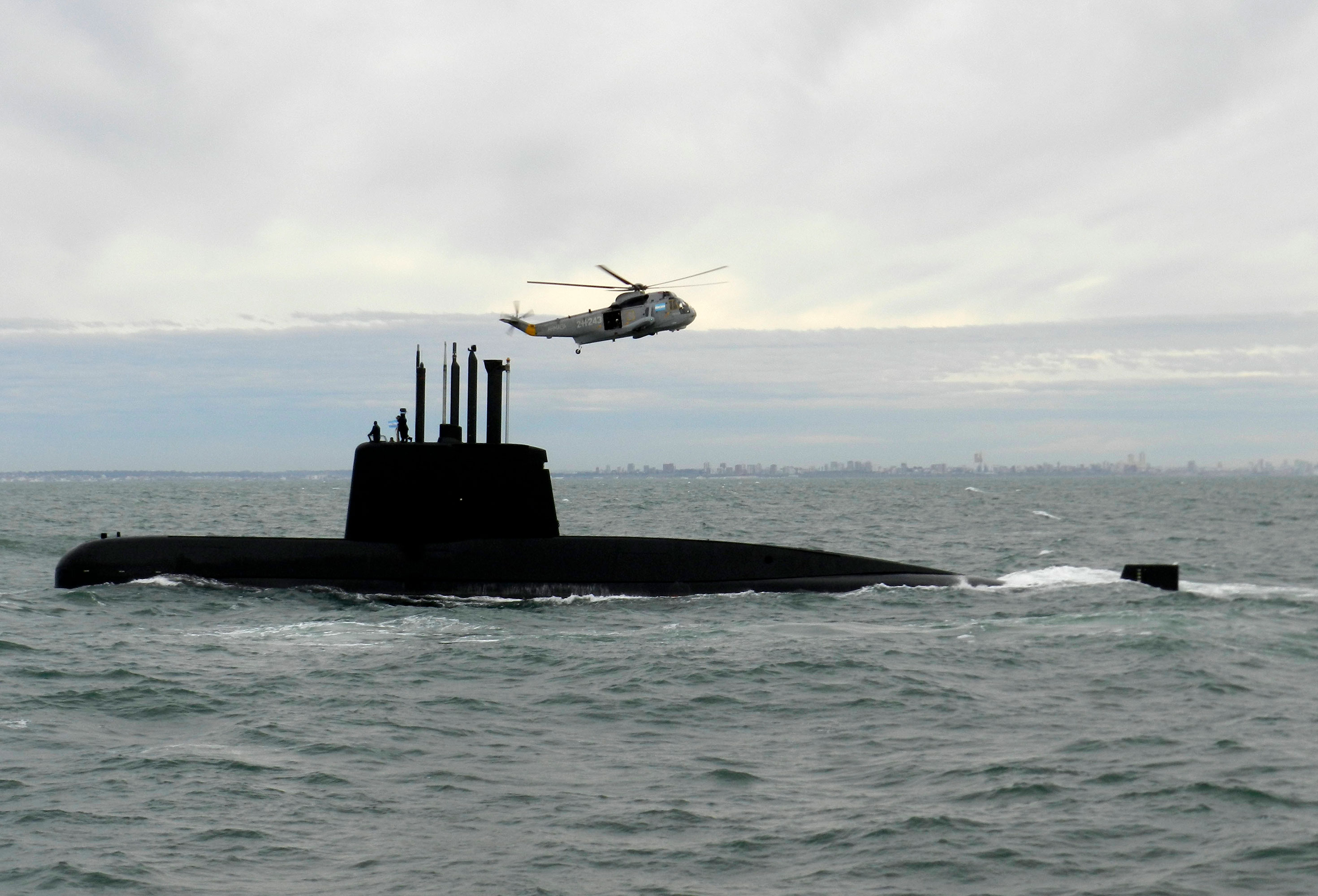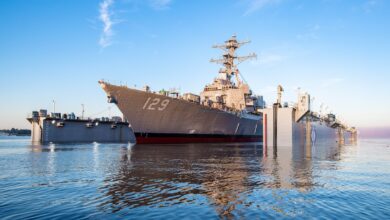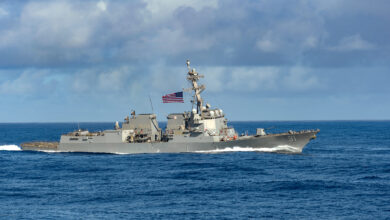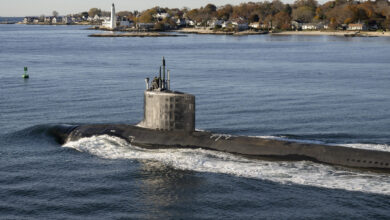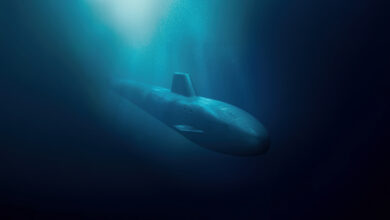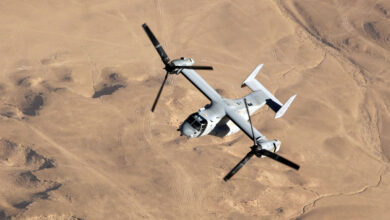Argentina’s Navy said seven brief attempted satellite calls on Saturday may have come from the ARA San Juan submarine that has been missing since Wednesday, while international search efforts are stepping up and focus changes to underwater search.
Argentina’s Navy confirmed on Friday it lost contact with the ARA San Juan submarine carrying 44 crew members off the country’s southeastern coast. The vessel left the Ushuaia naval base on Argentina’s southern tip on Monday to travel to Mar del Plata, about 400km (250 miles) southeast of Buenos Aires, and last sent a signal of its position on Wednesday morning.
On Saturday, the Navy tweeted that it had detected seven attempts to communicate via satellite phone which lasted between four and 36 seconds, and that this may “indicate that the crew is trying to re-establish contact, so we are working to locate the source of the signals.”
Las llamadas, con una duración de entre 4 y 36 segundos, fueron recibidas entre las 10.52 y las 15.42 en distintas bases de la Armada, aunque no llegaron a establecer contacto. Se trabaja ahora para determinar la ubicación precisa del emisor de las señales
— Armada Argentina (@Armada_Arg) November 19, 2017
The attempted calls made between 10:52 and 15:42 were to various military bases, the Navy said, but they did not connect. The Ministry of Defense is working with a U.S.satellite communication specialist company to try to determine the sent signals’ location, although it said that the signals may not have come from the missing sub.
Navy spokesman Enrique Balbi said the call signal strength was very low.
Surface search area doubled
Earlier, Balbi said the area being searched off the country’s southern Atlantic coast has been doubled after searches of 80 percent of the previously designated sea surface search area were completed on Saturday.
The 216km by 306km search area was centered on the last known location of the submarine, 432km offshore from Golfo San Jorge. At least 13 ships and six aircraft were searching the area in adverse weather conditions, with waves of up to seven metres (23 feet), La Nacion reported.
The the storm in the search zone is generating winds with gusts exceeding 80 km/hour (40 knots) and waves that oscillate between 6m and 8m, the Argentine Navy’s Gaceta Marinera reported, although the extended weather forecast predicts a slight improvement in the area from Tuesday.
Actualización sobre operaciones de búsqueda y rescate del #submarinoARASanJuan pic.twitter.com/1Zu6VpjZrV
— Armada Argentina (@Armada_Arg) November 19, 2017
Focus shifting to underwater search
Admiral Gabriel Gonzalez, commander of the Atlantic Naval Area and head of the Mar del Plata Naval Base, said on Saturday that no hypothesis in the search and rescue mission could be discarded and that focus was shifting to an undersea search.
“We haven’t been able to locate the submarine on the surface, that is why we are now giving priority to the search for the sunken submarine,” González said on Saturday. “An underwater search is much more complicated because it requires the use of more technology including sonar.”
Previously, the working assumption was that the missing submarine was on the surface, because it should surface in the event of a breakdown or loss of communication, and it did not activate emergency radio beacons.
Gonzalez said on Friday that the vessel had sufficient food and oxygen, while Balbi said the vessel was carrying food “for at least 15 days.”

U.S. Navy sends submarine rescue assets, joining growing international effort
Meanwhile, the U.S. Navy said in a Saturday press release that it was deploying submarine rescue assets to Argentina which can operate at various depths.
The first system – the Submarine Rescue Chamber and underwater intervention Remotely Operated Vehicle – was airlifted in four aircraft from California on Saturday and was due to arrive in Argentina on Sunday.

The second rescue system, the Pressurized Rescue Module and supporting equipment is scheduled to arrive in Argentina early next week, the release said.
The Submarine Rescue Chamber, a McCann rescue chamber designed during World War II, can rescue up to six people at a time at depths of 260m (850 feet), while the Pressurized Rescue Module can rescue up to 16 personnel at a time at depths of up to 610m (2,000 feet).
On Sunday, the U.S. military’s Southern Command deployed a second U.S. Navy P-8A Poseidon multi-mission maritime aircraft to Argentina.
The U.S. deployments add to a growing international search and rescue effort that includes a U.S. Navy P-8A Poseidon reconnaissance aircraft, a NASA P-3 Orion aircraft; a P-295 aircraft and a hydrographic vessel from the Chilean Navy; a U.K. C-130 aircraft, a research vessel and a patrol boat from the British Royal Navy; a P-3 from the Brazilian Air Force and a frigate and an icebreaker from the Brazilian Navy; the Skandi Patagonia support ship from oil company Total SA; as well as a number of aircraft and ships from the Argentine Navy and Air Force and fishing vessels in the area. Colombia, Uruguay and Peru have also offered support.
The U.K. is deploying the Royal Navy’s specialist Submarine Parachute Assistance Group to assist, and the NATO Submarine Rescue System from France has also been requested.
The Submarine Parachute Assistance Group can work in conjunction with the NATO Submarine Rescue System and is set up to enter the water at the location of an incident. Equipment pods dropped to the team contain Rigid-hulled inflatable boats (RIBs), life rafts, food, water and medical supplies, enabling the team to establish a floating reception area for submariners who have evacuated a sunken vessel, in order to provide medical and life support.
Admiral Gonzalez said they are coordinating “with units from the United Kingdom and the United States.” The U.K. and Argentina fought a war in 1982 after Argentina invaded the Falkland Islands, which are called Islas Malvinas in Argentina.
The Falkland Island government extended its “sincere hope that the submarine is found swiftly,” a Saturday statement said.
The ARA San Juan (S-42) is a 66-metre TR-1700 diesel-electric submarine built in Germany and has been in service with the Argentine Navy since 1986.
The vessel completed a mid-life modernization in 2014 in order to extend its service life by up to 30 years. During this process, the hull was cut in half to allow engineers’ access, La Nacion reported.
With reporting from AP

